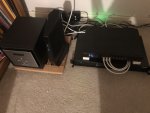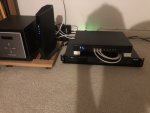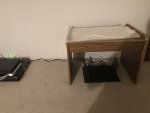avtella
Very Senior Member
I'm trying to get Lenovo to sell me a desktop system without an OS, but it doesn't seem possible.
I do have a quote for a ThinkCentre M920q (1L 'Tiny' desktop) with an i7-9700T processor and the Intel I350-T4 Quad Port Gigabit Ethernet Card for $930 including taxes (about 50% savings).
I'll see if I can configure anything like you're suggesting @Maverick009, thank you.
@Trip are you seeing any obvious pitfalls in the path I'm taking? Do you think a full-size Tower or a SFF tower would be a better option instead of the 'Tiny' I'm looking at now?
If going for just a home firewall I can guarantee you it’s gonna be wasted buying a powerful 6-8 core CPU if you are paying more so I hope it’s for a combo.You can probably even ask the actual OPNSense and pfSense devs on their forums for appliance sizing/specs and they’d probably say the same, having seen past interactions on forums and Reddit.
Unless your doing a some enterprise grade stuff it’s going to be way overpowered. This is my experience with my own EPYC3251 which has pFsense on ESXi along with some VMs. FYI the SuperMicro and Asrock use ASPEED AST2500 BMCs and actually do have video ports I just don’t find the need to as I can connect to the BMC web interface/KVM via my laptop from anywhere in the house via the IPMI port. Not a necessity obviously but a nice perk.
Also EPYC and Intel embedded in general moves slower architecture wise this is normal. This doesn’t mean they’re losing support in fact Asrock even expanded the EPYC 3K line with a newer 3451 mATX model, these things get supported for a long while. Also not sure one would need to worry about upgrading a CPU on a firewall, by that time the entire platform may have be replaced by something newer and cheaper and more power efficient and anyway many years down the line, I mean it’s not a gaming PC or something.
Also realize most of internal LAN work would be handled by a switch like transfers between devices.
You could do what ddaenen1 did and get a used system like with Xeon E series and save the money. After all this is isn’t a gaming PC it’s a firewall. It’s still gonna last a very long time without breaking a sweat. I didn’t mention used much earlier as you seemed against it when you said no eBay. Also take a look at ServeTheHome forums a lot of more experienced people there unlike me.
Last edited:










